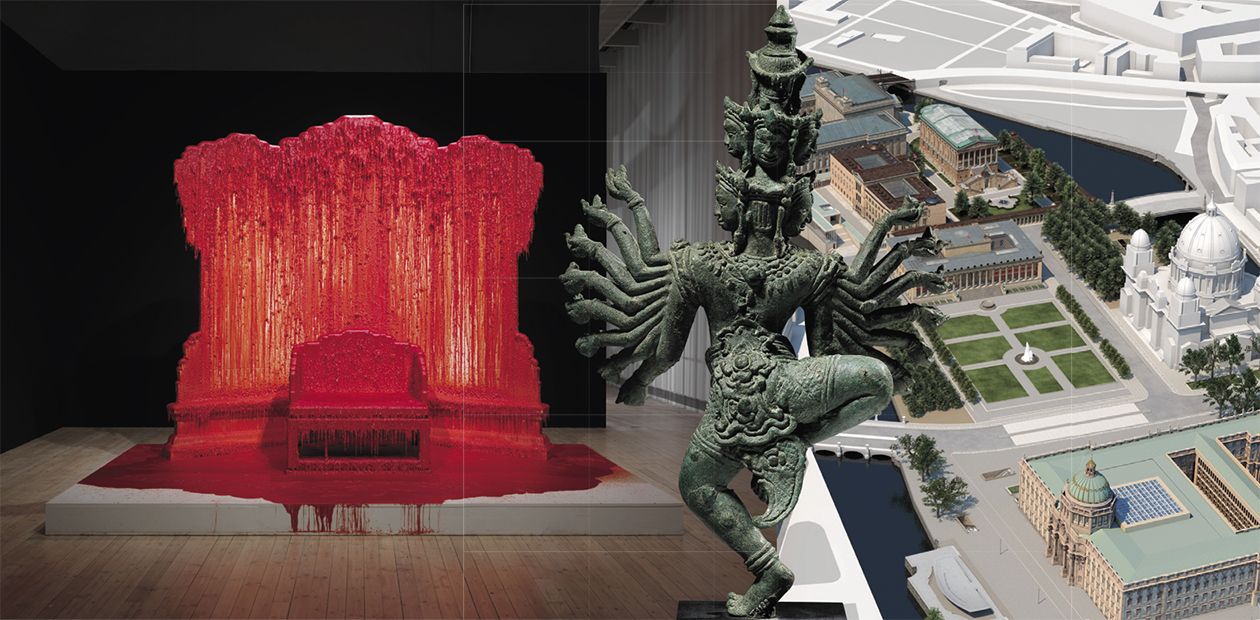“Athens on the Spree”: A Center for Art and Culture in Berlin
By far the largest cultural institution in Germany is the Prussian Cultural Heritage Foundation, which comprises all the branches of cultural tradition, ranging from arts to literature and music. The responsibility for maintaining the Prussian Cultural Heritage Foundation rests both with the Federal Government and all sixteen federal states of Germany. In a new issue of SCIENCE First Hand, the President of the Foundation Prof. Hermann Parzinger, a well-known archaeologist, tells the readers about the plans and outcomes of this outstanding project to transform the historical, cultural, and arts center of Berlin
At the very heart of Berlin, in the northern part of the Spreeinsel island on the Spree river, you will find one of the main attractions of the German capital city—a constellation of Berlin's museums, which has been known since the 19th century as the Museum Island. The idea of creating a public museum to exhibit works of European art from the ancient period to modern times was endorsed by the Prussian King Friedrich Wilhelm II at the end of the 18th century and implemented during the reign of his descendants. A hundred years later, the Spree's waters reflect the magnificent facades of five museums, each of which has a unique collection of exhibits relating to a particular artistic genre and historical/cultural epoch.
Left: Zhao Zhao’s work “Waterfall” (2013) was part of the Humboldt-Lab project "Game of Thrones", which dealt with experimental artistic forms for presenting an imperial Chinese throne from the collection of the Museum of Asian Art. Photo: Jens Ziehe, Courtesy Alexander Ochs Galleries Berlin / Beijing.
Right: Simulation of the Museum Island with the Berlin Palace, the future home of the Humboldt-Forum, in the foreground (currently under construction).
© SPK/ART+COM / Schloss: eldaco, 2015.
Center: Eight-headed dancing Hevajra, Cambodia, 12th or 13th century.
© bpk / Staatliche Museen zu Berlin, Museum für Asiatische Kunst / Georg Niedermeiser
The museum complex was intended from the very beginning to become “an open space for the arts and sciences,” which is why Berlin became known as “Athens on the Spree.” During World War II, “the German acropolis” suffered massive destruction due to bombing, and the GDR government did not have enough funds to finish the costly restoration works. However, it was possible to modernize and restore most of the buildings, except the so-called New Museum, which was in ruins for over 70 years, and Berliners began to call it the “disgrace” of the city.
A new life of the Museum Island began only in the late 1990s after the reunification of Germany. This life meant the realization of the so-called ‘Master Plan Museum Island,’ designed by the Prussian Cultural Heritage Foundation. It involves the complete overhaul of all buildings and the first-time restoration of the New Museum as well as the addition of new buildings to combine them all into a single architectural ensemble. The scale of the transformations is amazing: the New Museum has been completely restored and now exhibits the unique Egyptian collection, including the famous bust of the Egyptian queen Nefertiti; the Pergamon Museum will receive a new wing; and the James Simon Gallery (currently under construction) will have everything necessary for a modern museum complex visited by several million people a year. The finale in the transformation of the Museum Island will be the restoration of the aboveground galleries of the Archaeological Promenade, an architectural “bridge” that will not only geographically connect four of the five museums in the island but also serve as a link between the cultural epochs and peoples reflected by the museums. The Archaeological Promenade will address multi-focus topics that have occupied the human mind independently of time and cultural region, be it the question of life after death or issues of beauty and other topics.
Building the Archaeological Promenade is an important step towards creating a benchmark model of a modern museum—a universal encyclopedic-type museum tracing its origin to the “chambers of curiosities” (Kunstkameras), which created an “integral image of the Universe in a limited space.” According to the master plan designed by the Prussian Cultural Heritage Foundation, the next step will be to restore the Berlin Palace, which was blasted by the communist regime in GDR. Equipped with the latest museum technology, the rebuilt palace will be the future home of the Humboldt Forum, which will mainly be furnished by the non-European collections of the Berlin National Museums of the Prussian Cultural Heritage Foundation. African masks, boats from Oceania, and Chinese imperial throne—all of these items from the vast collections now stored in different museums of Berlin will guide museum visitors in their virtual tour around the world.
Presently, the implementation of the master plan is far from complete; however, when the revived Berlin Palace opens its doors to visitors in 2019, one of the most ambitious humanitarian projects of the century to create a center of world art and culture will become a reality and a separate “museum Universe” will expand to the limits of the oecumene, the world inhabited by man.






